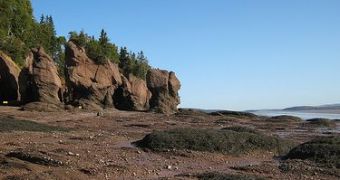For a long time now, scientists believed that it was the reptiles that populated the continental interiors as they did not need to return to water for breeding, unlike amphibians. This latest discovery of lizard footprints conserved in dry river plains rocks, hundreds of miles from the sea confirms the theory.
The lizard footprints are 318 million years old. They date from the Carboniferous Period, when the Earth had a single enormous continent, Pangaea. The traces were discovered in sea-cliffs on the Bay of Fundy in New Brunswick, Canada. These traces confirm that reptiles were the first vertebrates that adventured and took over dry continental interiors, opening the way for every ecosystem that exists on land nowadays.
This amazing discovery was made by Dr Howard Falcon-Lang of Royal Holloway, University of London. His study results, confirmed with Professor Mike Benton of the University of Bristol and Canadian scientists, are published in the journal 'Palaeogeography, Palaeoclimatology, Palaeoecology', today. The same research team discovered in 2007 the oldest reptile footprints even known at the time, in a different digging site in New Brunswick. The traces at the Bay of Fundy might be of a similar age and maybe even older that the 2007 discovery, e! Science News reports.
Professor Benton said about the Bay of Fundy's traces: “The footprints date from the Carboniferous Period when a single supercontinent (Pangaea) dominated the world. At first life was restricted to coastal swamps where lush rainforest existed, full of giant ferns and dragonflies. However, when reptiles came on the scene they pushed back the frontiers, conquering the dry continental interiors.”
“The Bay of Fundy is such an amazing place to hunt for fossils. The sea-cliffs are rapidly eroding and each rock-fall reveals exciting new fossils. You just never know what will turn up next,” Dr Falcon-Lang added.

 14 DAY TRIAL //
14 DAY TRIAL //